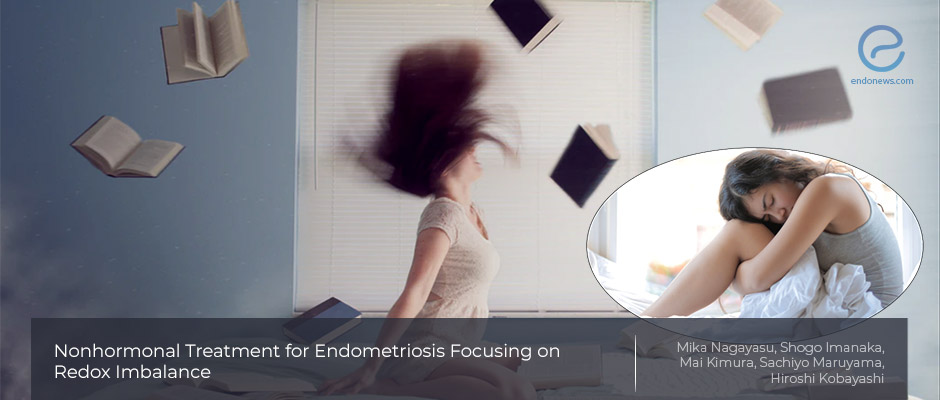Antioxidant therapy for the endometriosis pain
Feb 17, 2021
Can we suppress the superoxide anion that causes pain in endometriotic women by natural substances?
Key Points
Importance:
- Superoxide anion is the major compound of reactive oxygen species (ROS) that may cause pelvic pain in endometriotic women that is produced by monthly bleeding in endometriosis patients.
Highlights:
- Nonhormonal antioxidants and natural compounds such as polyphenols, statins, and dopamine agonists that suppress ROS which causes pain may be promising therapeutic candidates.
What's done here:
- The team lead by Dr. Hiroshi Kobayashi from Nara Medical University, Japan, investigate the oxidant/antioxidant status of endometriotic patients to prepare a convincing ground for strengthening the beneficial effect of non-hormonal treatment on their pain.
- A literature search of PubMed and Embase database between 2000-2020 using the combined key-words such as “endometriosis”, “oxidative stress”, “anti-oxidants” “superoxide” “pain,” and “clinical.”
- The production of large amounts of superoxide anion and its relation to pain is described in scientific detail.
- Potential nonhormonal therapeutics of endometriosis pain caused by ROS were outlined, by summarizing the compounds effective for superoxide-related pain in animal models.
- Promising therapeutic candidates from 8 preclinical studies and 4 prospective clinical trials conducted to date were explained.
Authors conclusion:
-
Multicenter studies with polyphenols, dopamine agonists, and statins are desired as a treatment strategy that does not depend on female hormones, is safe, and can be used
for a long period of time while maintaining the quality of life.
Lay Summary
Ts the protective defense mechanism of cells, hence the destruction of balance between oxidants and antioxidants in our body is called "redox imbalance". The major oxidants are reactive oxygen species (ROS) that are involved in multiple cellular processes by physiologically transporting signals. Our body has also an antioxidant defense system that includes a complex network of enzymes and co-enzymes. Additionally, we could intake externally suppliable antioxidants like vitamin E, carotenoids, etc. for further antioxidant needs.
Endometriosis is a chronic inflammatory disease with repeated episodes of hemorrhage which produces large amounts of superoxide anions and ROS leading to cellular damage. This nature of the disease exposes an imbalance between free radicals and antioxidants in the body. Several antioxidants have been used to suppress free radicals in endometriosis-related pain based on this knowledge.
The team lead by Dr. Hiroshi Kobayashi from the Department of Obstetrics and Gynecology, Nara Medical Universiy, Japan, set up this three-leveled narrative review and recently published their arguments in "Gynecologic Obstetric Investigation".
After a detailed scientific explanation of local and systematic oxidant/antioxidant status in women with endometriosis with a special focus on superoxide anion function, and relation to "pain", the authors discussed the data in the literature about redox imbalances in endometriotic tissue, follicular fluid, peritoneal fluid, and the blood of endometriosis patients.
Finally, the authors explained some nonhormonal compounds that can eliminate or alleviate superoxide-related pain in in vitro experiments that also include polyphenols, statins, and dopamine agonists nominated as possible effective candidates for endometriosis-related pain, although their efficacy is controversial among researchers.
The authors concluded that nonhormonal antioxidants are promising therapeutical agents to suppress superoxide anions and can be used safely for pain when compared to hormonal therapy. "Multicenter studies with polyphenols, dopamine agonists, and statins are desired as a treatment strategy that does not depend on female hormones, is safe, and can be used for a long period of time while maintaining the quality of life", they added.
Research Source: https://pubmed.ncbi.nlm.nih.gov/33395684/
oxidative stress antioxidants polyphenol superoxide dismutase endometriosis statins pain hormone

